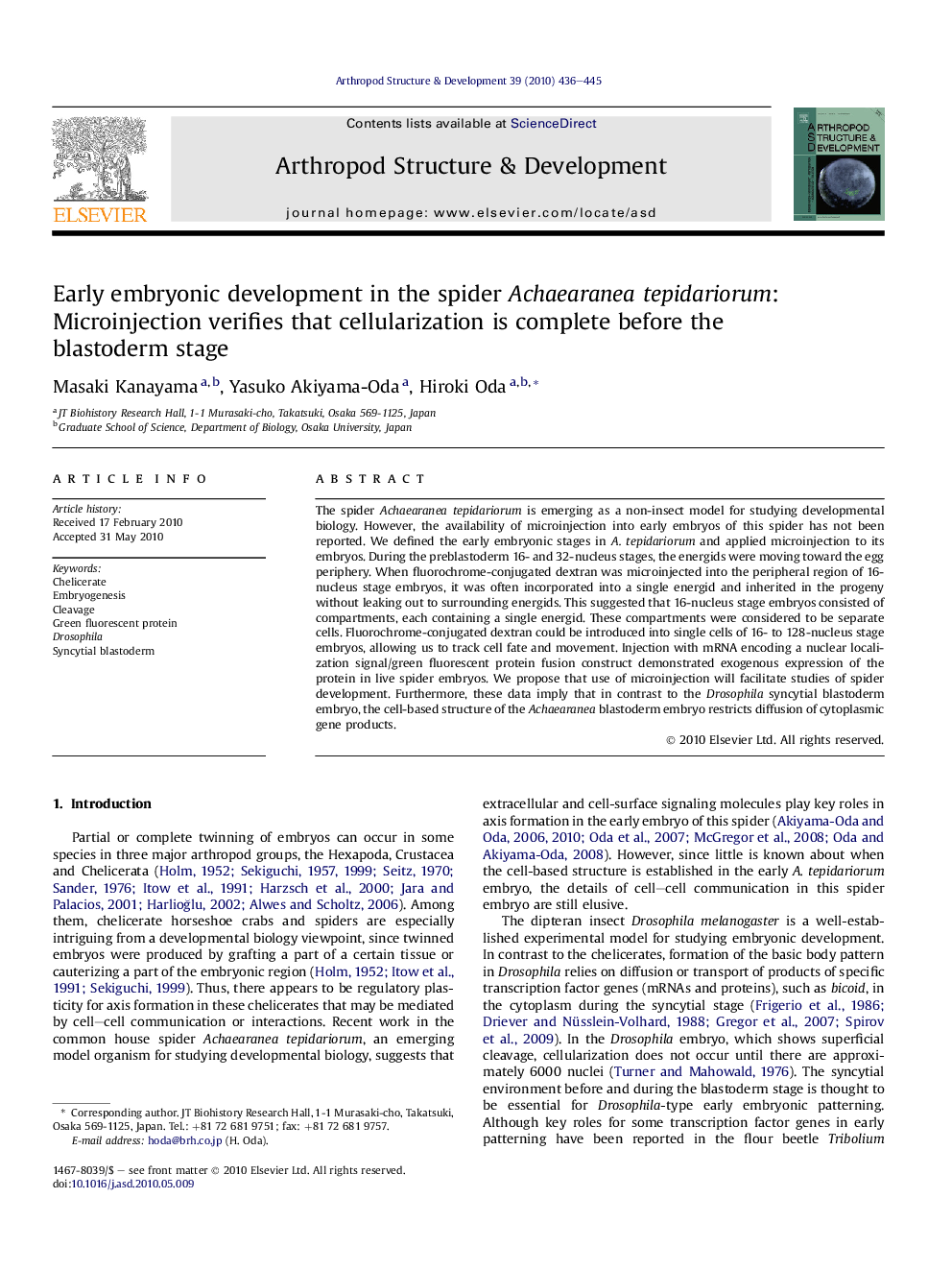| Article ID | Journal | Published Year | Pages | File Type |
|---|---|---|---|---|
| 2778924 | Arthropod Structure & Development | 2010 | 10 Pages |
The spider Achaearanea tepidariorum is emerging as a non-insect model for studying developmental biology. However, the availability of microinjection into early embryos of this spider has not been reported. We defined the early embryonic stages in A. tepidariorum and applied microinjection to its embryos. During the preblastoderm 16- and 32-nucleus stages, the energids were moving toward the egg periphery. When fluorochrome-conjugated dextran was microinjected into the peripheral region of 16-nucleus stage embryos, it was often incorporated into a single energid and inherited in the progeny without leaking out to surrounding energids. This suggested that 16-nucleus stage embryos consisted of compartments, each containing a single energid. These compartments were considered to be separate cells. Fluorochrome-conjugated dextran could be introduced into single cells of 16- to 128-nucleus stage embryos, allowing us to track cell fate and movement. Injection with mRNA encoding a nuclear localization signal/green fluorescent protein fusion construct demonstrated exogenous expression of the protein in live spider embryos. We propose that use of microinjection will facilitate studies of spider development. Furthermore, these data imply that in contrast to the Drosophila syncytial blastoderm embryo, the cell-based structure of the Achaearanea blastoderm embryo restricts diffusion of cytoplasmic gene products.
